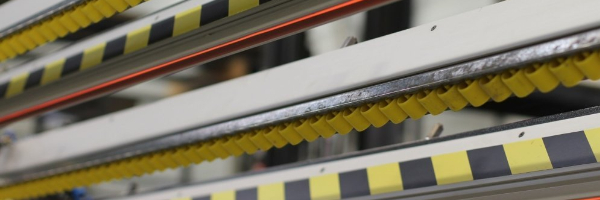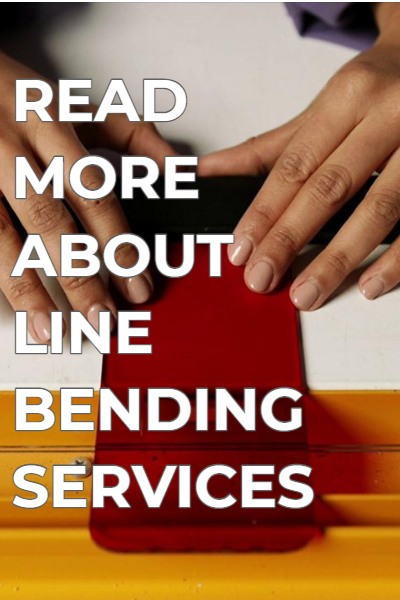Line bending is a process whereby a piece of plastic is bent along a narrowly defined “line”. This process allows items such as display stands, leaflet dispensers, POS display, garden furniture, binders, POP display products and acrylic tables to be made from flat material.
The part to be bent is place over the line bender in the correct position and left to heat. The length taken to heat sufficiently is dependent on the type of material and its thickness. Thicker acrylics take longer whilst thin PVC is pliable within a minute or two. Once the correct temperature has transferred to the material it can be bent using the lightest of pressure. Once at the right angle the whole piece is transferred to a jig to allow for cooling.
Although sounding simple line bending is a complex process that requires specialist equipment and specialist team to ensure projects are completed to the highest quality. Understanding of the project, the material to be bent and consequent control of temperature is needed to deliver a finished product on time, at maximum efficiency and minimal cost.
Wrights Plastics can line bend single or double parallel products as well as manufacture more complex forms. Utilising some of the best equipment available means we can bend with exceptional accuracy, offer uninterrupted heat bands where required and bend substrates up to 3m long and up to 25mm thickness. We are able to line bend a large range of acrylics and polycarbonates.
Complete the line bending enquiry form or call the team on 0121 580 3080
Wrights Plastics has one of the largest collections of line bending machinery that includes
- Clarkes ld60 bender
- Clarkes line bender rig x3
- Flatbed manual heater x 2
- Flatbed manual heater thermobend elite 72
- Open wire heaters
- Pvc autobender x2
- Shannon auto-bend hrp/d
- Shannon autobend hrt 220-300
- Shannon bender
Stages of Line Bending
First, the strip heater is heated to the desired temperature; the area to be heated measured and marked out. The acrylic sheet is placed onto the rails of the strip heater. The rails can be adjusted to increase or decrease the area to be heated. The heating time will depend upon the thickness of the thermoplastic and some thermoplastic may require heating on both sides.
Once the acrylic has reached a softened state, it is removed from the rails and accurately positioned on or in the former. The acrylic is then bent to the profile of the former and allowed to cool.



